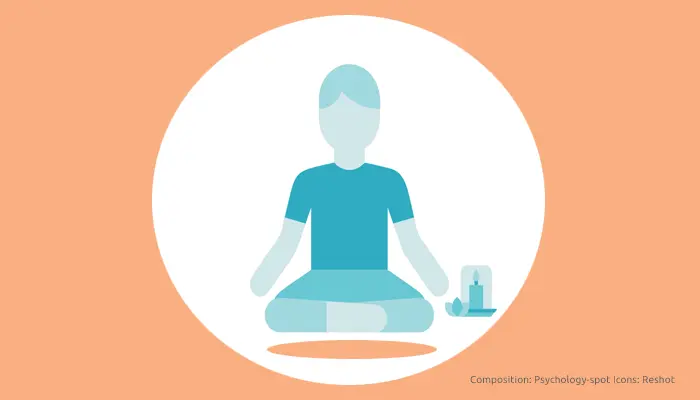
Sometimes life overwhelms us. Sometimes circumstances exceed our coping resources and we are invaded by anguish, anxiety or fear. There is a very simple and effective psychological technique to help us release that emotional tension, calm down when we feel overwhelmed, reduce anxiety and even process traumatic experiences that prevent us from moving forward: it is called “butterfly hug”.
The origin of the technique called “butterfly hug”
In 1998 Acapulco suffered the ravages of Paulina, one of the deadliest, most destructive and costly hurricanes that crossed Mexico in the second half of the 20th century. Soil moisture produced by the passage of another storm just a week before, combined with the heavy rain generated by Paulina, caused severe landslides and flooding in the area. Some 5,000 homes were completely destroyed and another 25,000 damaged, leaving some 10,000 families homeless.
At that time, Lucina Artigas developed a technique that would become standard practice for medics in the field while working with survivors of natural and man-made disasters: the “butterfly hug.”
The Butterfly Hug is a bilateral stimulation technique that is very useful for reducing anxiety and calming us down when we feel emotionally overwhelmed. Tapping stimulates both cerebral hemispheres, triggering a rapid relaxation response that helps release tension.
It is used with both adults and children to facilitate primary processing of traumatic memories. Unlike other EMDR techniques in which the therapist plays a more active role, in the butterfly hug it is the person himself/herself who has the leading role. In fact, it is thought that the control patients gain over their bilateral stimulation may be an empowering factor that helps them retain a sense of safety while processing traumatic experiences or memories.
The basics of this technique
The butterfly hug is one of the techniques that are part of neuroscientific or reprocessing therapies, such as EMDR (eye movement desensitization and reprocessing). In fact, EMDR has the support of the World Health Organization as a preferred therapy for traumatic events such as natural disasters, wars or terrorist attacks.
Unlike conventional psychological therapies that are fundamentally based on the dialogue between the psychologist and the person, with these methodologies language is not predominantly used, but are used specific techniques to stimulate certain areas of the brain.
The Information Processing Theory explains that memories are stored associating with each other, so that our past experiences may be conditioning our present. Therefore, when a person suffers from a psychological disorder or has a blockage in the present, it is likely that he/she has a network of memories or information that predisposes him/her to feel or experience these disturbances at present.
For example, current anxiety could be explained by a series of past experiences that have generated negative learning and that influence the present in such a way that the person feels fear or apprehension in the face of different stimuli or situations.
Those memories are accessible, but in order to overcome present situations, it is necessary to release the disturbances encapsulated in these episodes of the past. To achieve this are used different techniques, from rapid eye movements to tapping, since in this way it is possible to reduce the emotional impact of the painful experience.
Through mental exposure the intensity level of the emotion is reduced and reprocessed, which means that new, more adaptive synaptic connections are generated. According to this theory, memory works like a network in which elements as different as images, sounds, bodily sensations, emotions are connected… We learn through these new associations, but we can also unlearn by creating new associations.
In fact, a study conducted at the National Institute for Integrative Healthcare in Fulton revealed that after just 4 days of tapping training, anxiety decreased by 40%, symptoms of depression by 35%, and post-traumatic stress disorder by 32%. At the same time, people presented significant decreases in the level of cortisol, the stress hormone, as well as in blood pressure, also reporting greater well-being and happiness.
How to apply the butterfly hug step by step?
Lucina Artigas herself explains how to apply this EMDR technique: “Cross your arms over your chest, so that the tip of the middle finger of each hand is placed under the clavicle and the other fingers and palms covering the area below that point, between the clavicle and shoulder and the clavicle and sternum.”
“The hands and fingers should be as vertical as possible so that the fingers point towards the neck and not towards the arms. If you wish, you can interlock your thumbs to form the body of the butterfly and extend the other fingers outward to form the wings of the butterfly.”
“You can close your eyes completely or squint looking at the tip of your nose. Next, alternate the movement of your hands, like the fluttering of a butterfly. Let your hands move freely. You can breathe slowly and deeply (abdominal breathing), while observing what is going on in your mind and body (thoughts, images, sounds, smells, feelings, and sensations) without trying to change, move away, or judge them. You can imagine that you observe them as passing clouds.”
Ideally, you should do this exercise in a comfortable position, sitting or lying down. You can also cross your arms over your chest by placing your right hand on your left shoulder and your left hand on your right shoulder, tapping alternately on each shoulder. Choose the method that you feel most comfortable with and that works best for you.
Tap those little taps for about 20-25 seconds (each set) while you become aware of what’s going on in your mind and body. Next, take a deep breath, see how you feel, and start a new set. If the positive feelings increase, continue the exercise for a few more rounds until you reach a state of calm.
To strengthen positive emotions you can visualize a real or imaginary place that makes you feel calm, safe and at peace. Try to recreate that image as realistically as possible and focus on the positive sensations you experience.
Another way to use this exercise to free yourself from situations and sensations that cause you discomfort is to focus on them and move your hands alternately, tapping your fingers on the pectorals, simulating the fluttering of a butterfly. It is important that you remember that you must hit first on one side of the chest and then on the other side, never at the same time.
Sources:
Artigas, L. & Jarero, I. N. (2022) El Abrazo de la Mariposa Método de Terapia EMDR para la Autoadministración de Estimulación Bilateral. EMDR protocols for prolonged adverse experiences.
Bach, D. et. Al. (2019) Clinical EFT (Emotional Freedom Techniques) Improves Multiple Physiological Markers of Health. J Evid Based Integr Med; 24: 2515690X18823691.
Boath, E. et. Al. (2014) The impact of EFT and matrix reimprinting on the civilian survivors of war in Bosnia: a pilot study. Curr Res Psychol; 5: 64–72.
Church, D. et. Al. (2013) Psychological trauma symptom improvement in veterans using emotional freedom techniques: a randomized controlled trial. J Nerv Ment Dis; 201: 153–160.



